Doryanthes excelsa (Greek: δόρυ, dory, “spear” + ἄνθος, anthos, “flower”; Latin:
excelsus, “high, tall”) commonly is known as flame lily, giant lily, Gymea lily,
Illawarra lily or spear lily. In Eora (ee, "yes" + ora, "here, this place"), the dialect of
the indigenous Australian inhabitants of the area of Sydney, gymea means "giant
lily."

Australia's Flaming Red Spires: Gymea Lily (Doryanthes excelsa)
Native only in the area of Sydney, wild Gymea lilies reach heights of 16 feet (5 meters). Standing tall with fiery flowers, these colorful Aussie icons resemble flaming spires.
Distribution
Doryanthes excelsa occurs natively in eastern coastal areas in the vicinity of Sydney (33° 51′ 35.9″ South latitude, 151° 12′ 40″ East longitude) in the southeastern state of New South Wales. Doryanthes excelsa ranges from the seaside city of Wollongong (34° 25′ 59″ South latitude, 150° 52′ 59″ East longitude), about 50 miles (80 kilometers) south of Sydney, to the bucolic town of Karuah (32° 39′ 22.2″ South latitude,151° 57′ 54″ East longitude), about 125 miles (200 kilometers) north of Sydney.
Wollongong, native habitat of Gymea lilies: view of harbor with its two lighthouses, Wollongong Head Lighthouse (1937) on Flagstaff Point (foreground), and Breakwater Lighthouse (1871) in Belmore Basin on southern breakwater (right, background)
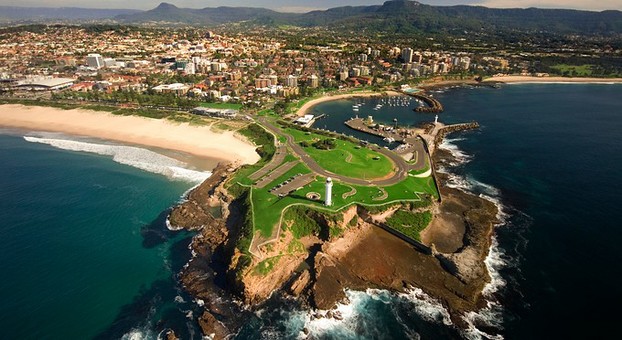 Wollongong harbor's two lighthouses, Wollongong Head Lighthouse (foreground), and Breakwater Lighthouse (right, background) |
Three isolated populations of Doryanthes excelsa occur natively near the small town of Glenreagh (30° 3′ 0″ South latitude, 152° 59′ 0″ East longitude), about 280 miles (450 kilometers) north of Sydney, and near the small seaside town of Corindi (30° 1′ 37.2″ South latitude,153° 11′ 45.6″ East longitude), about 354 miles (573 kilometers) north of Sydney.
A hardy plant willing to tolerate widely divergent ecosystems, Doryanthes excelsa has expanded its range, adapting to city life in:
- Adelaide (34° 55′ 44.4″ South latitude, 138° 36′ 3.6″ East longitude) on the southeast coast of the southeastern state of South Australia;
- Brisbane (27° 28′ 4″ South latitude, 153° 1′ 40″ East longitude) on the east coast of the northeastern state of Queensland;
- Melbourne ( 37° 48′ 49″ South latitude, 144° 57′ 47″ East longitude) on the south coast of the southeastern state of Victoria; and
- Perth (31° 57′ 8″ South latitude, 115° 51′ 32″ East longitude) on the southwest coast of the western state of Western Australia.
Habitat: Urban and rural
Doryanthes excelsa thrives in the dry, open forest shrubland ecosystem of sclerophyll (Greek: σκληρός, scleros, “hard” + φύλλον, phyllon, “leaf”) communities, that is, woody plants with hard, leathery leaves, that characterize the eastern third of New South Wales, radiating from the coast inwards. Doryanthes excelsa is easily found in sandstone soil that is partly clay.
Doryanthes excelsa also grows in urban areas, such as gardens, parks and along roadsides.
Externals: What Doryanthes excelsa looks like
Gymea lily stands proud and tall, with its single stem reaching a height of up to 16.4 feet (5 meters).
Leaves are basal, meaning that they grow from the lowest part, or base, of the plant. Their dark to olive green surface is glabrous (Latin: glaber,“smooth, hairless, bald”), that is, smooth.
Leaves stretch in tussocks, like long swords, from 3.2 to 8.2 feet (1 to 2.5 meters) in length, with a width of 3.9 inches (10 centimeters). Shorter leaves, up to one foot (0.3 meters) in length, clamber sparsely up the stalk.
Trumpet-shaped flowers are bright red or pink red, with paler centers, although a rare whiteness may occur. Individual flowers, about 4 to 6 inches (10 to 16 centimeters) in length, form spectacular clusters with a diameter of up to two and one-third feet (0.6 meters). The flaming cluster dramatically rests on top of the solitary, lanky stem, which itself emerges proudly from the center of the base's spiky tussock of leaves.
Stamens (Latin: stamen, “thread of the warp”), which are a flower’s pollen-producing reproductive organs, normally comprise a filament (Latin: filum, “thread”), or stalk, topped by an anther (Greek: ἄνθος, anthos, “flower”). Filaments are twice the length of anthers, which measure measure one to one and one-half inches (27 to 38 millimeters) in length. The anthers of Doryanthes excelsa are green yellow.
Doryanthes excelsa produces a pod that matures to a red brown color. Elliptical to ovoid (Latin: ovum, "egg") in shape, seed pods measure about 2.7 to almost 4 inches (7 to 10 centimeters) in length.
Seeds are flat and brown with a length of about 0.6 to 0.9 inches (1.5 to 2.5 centimeters).
Life cycle ~ Irregular inflorescence
Life cycle
The stalk spurts out from the leafy tussock during winter. Flowers blossom in spring and summer. Thereafter seed pods appear, splitting open in January or February.
Irregular inflorescence: Jumpstarting flowering with a blow torch or a pebble
A disappointment that frustrates admirers of Doryanthes excelsa is its proclivity towards unpredictable inflorescence, that is, flowering. Strategies exist for triggering inflorescence. In the wild, Doryanthes excelsa are stimulated to flower after bush fires, which stimulate the production of ethylene, its naturally occurring, ripening hormone.
According to Jeremy Smith, who cultivates Gymea lilies on his farm on the central coast of New South Wales, flowering may be induced by simulating bush fire conditions. Jeremy's effective simulator is a blow torch. Nevertheless, he cautions against home gardeners trying his method. Instead, a pebble, placed in the center of the plant, serves as an effective, far less dangerous, stimulant.
Ethnobotany
Ethnobotany: Household items and culinary delights with Doryanthes excelsa
Indigenous Australians cut down the tender stalks, at about 1.5 feet (0.5 meter) in height, for roasting.
Roots were also roasted and then used in a cake that was eaten cold.
Fibers in the leaves were used in making brushes and mats.
Synecology: Second-trophic level feeders
There are basically four to five trophic (Greek: τροφή, trophē, "food, feeding") levels in the food chain, encompassing primary producers, such as plants, in the first level, herbivores (Latin: herba, "small plant, herb" + vorare, "devour, swallow"), or plant eaters, in the second level, on up to apex predators, species at the top of their food chain.
Synecology (Greek: σύν, syn, “with” + oικoλoγία, ecologia, “house” + “study”) expresses the interrelationships an organism and other inhabitants of the ecosystem, identifying any persistent faunal and floral communities and any consistent geological environment.
In the second trophic level of these floral-faunal synecologists, nectar loving birds, such as honeyeaters (family Meliphagidae), rainbow lorikeets (Trichoglossus haematodus), and wattlebirds (genus Anthochaera) are attracted to Doryanthes excelsa nectar.
Flaming red spires: Australia’s iconic coastal sentinels
A bed of Doryanthes excelsa resembles Olympic torches held high and is equally stunning. The lofty flaming scarlet splendor of Doryanthes excelsa in full flower mesmerizes with its intrinsically and uniquely Australian beauty. Native sentinels of the Sydney Basin along Australia's southeastern coast, Gymea lilies distinguish their landscape and extend warm welcomes with their iconic presence.
Dedication
This article is dedicated to the memory of three dedicated naturalists, two of whom were superb illustrators and one of whom was an observant scientist:
- Ferdinand Bauer (January 20, 1760–March 17, 1826);
- Numa Morel;
- José Francisco Correia da Serra (June 5, 1751-September 11, 1823).
Their timeless contributions to understanding the intricacies of nature are forever appreciated.
Acknowledgment
My special thanks to talented artists and photographers/concerned organizations who make their fine images available on the internet.
Image Credits
Gymea lily (Doryanthes excelsa) flowering at University of New South Wales: Eug, CC BY-SA 3.0, via Wikimedia Commons @ https://commons.wikimedia.org/wiki/File:GymeaLily_UNSW_Flowers.jpg
Wollongong harbor's two lighthouses, Wollongong Head Lighthouse (foreground), and Breakwater Lighthouse (right, background): illawarrashowcase, CC BY 2.0, via Flickr @ https://www.flickr.com/photos/56184119@N02/5196185039/
Gymea lily's bud and flowers atop altitudinously long stem, Roma Street Parkland, Brisbane, SE Queensland, NE Australia: Tatiana Gerus (Tatters:)), CC BY-SA 2.0, via Flickr @ https://www.flickr.com/photos/tgerus/6056096872/
iconic silhouette in Sydney's morning light: Newtown grafitti, CC BY 2.0, via Flickr @ https://www.flickr.com/photos/newtown_grafitti/8127035559/
closeup of Gymea lily's growing stalk: Stan Shebs, CC BY-SA 3.0, via Wikimedia Commons @ https://commons.wikimedia.org/wiki/File:Doryanthes_excelsa_3.jpg
closeup of Gymea lily floral clusters, Sydney: Robyn Jay (robynejay), CC BY SA 2.0, via Flickr @ https://www.flickr.com/photos/learnscope/6135216059/
Birrarung Marr, inner city park's stretch in Jolimont Yard, Melbourne central business district, Victoria, SE Australia: Rexness, CC BY-SA 2.0, via Flickr @ https://www.flickr.com/photos/rexness/5129020223/
typical exposure in coastal bush forest on Illawarra escarpment: Mount Mitchell, south of Stanwell Park, New South Wales: Klaus-Dieter Liss (kdliss), CC BY-SA 3.0, via Wikimedia Commons @ https://en.wikipedia.org/wiki/File:GymeaLiliLeaves.jpg
illustration by Ferdinand Bauer (1760-1826) from 1801-1803 HMS Investigator circumnavigation of Australia: Public Domain, via Wikimedia Commons @ https://commons.wikimedia.org/wiki/File:Trichoglossus_moluccanus_-_Bauer_(colourised).jpg
hand-colored etching by Ferdinand Bauer, "Leonardo of natural history illustration", from 1801-1803 Australia expedition: Illustrationes Florae Novae Hollandiae (1813), Public Domain, via Wikimedia Commons @ https://en.wikipedia.org/wiki/File:Doryanthes_excelsa_(Illustrationes_Florae_Novae_Hollandiae_plate_13).jpg
portrait by Domenico Pellegrini (1759-1840), Academia das Ciências de Lisboa: Public Domain, via Wikimedia Commons @ https://en.wikipedia.org/wiki/File:Abade_correia_da_serra.jpg
1: whole flower; 2: lacinia of corolla with filament; 3: Anther extinctoriiformis, after foecundation: Joseph Correia, "On the Doryanthes," Transactions of Linnean Society, Vol. 6 (1802), Plate 23, page 212, Public Domain, via Biodiversity Heritage Library @ https://www.biodiversitylibrary.org/page/758353
Doryanthes excelsa drawing accompanying Abbé Correa's description of Doryanthes genus: Joseph Correia, "On the Doryanthes," Transactions of Linnean Society Vol. 6 (1802), Plate 24, page 213, Public Domain, via Internet Archive @ https://archive.org/details/transactionsofli06lond/page/n277/mode/1up?view=theater
circa 1865 botanical illustration by Numa Morel: Charles Jacques Édouard Morren's La Belgique horticole, Vol 18 (1868), Plate 2, pages 16-17, Public Domain, via Wikimedia Commons @ https://en.wikipedia.org/wiki/File:Doryanthes_excelsa_-_Morren.jpg
Doryanthes excelsa drawing accompanying Abbé Correa's description of Doryanthes genus
A-germen with pistillum; B-germen horizontal section; 1-capsula, 2-capsula horizontal section; 3-seed, 4-seed section; 5-nucleus; 6-naked seed, 7-section showing perisperm and embryo
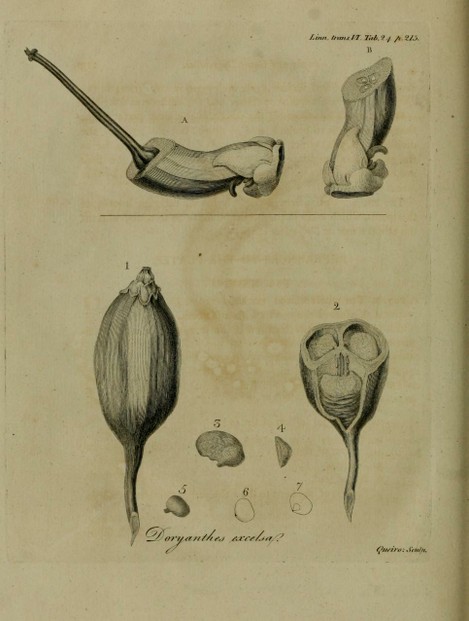 Joseph Correia, "On the Doryanthes," Transactions of Linnean Society Vol. 6 (1802), Plate 24, page 213 |
Sources Consulted
Bauer, Ferdinand. Illustrationes Florae Novae Hollandiae. London, 1813.
Correia de Serra, Joseph. "On the Doryanthes, a new genus of Plants from New Holland, next akin to the Agave." Transactions of the Linnean Society, Volume 6 (1802): 211-213.
- Available via Biodiversity Heritage Library at: http://www.biodiversitylibrary.org/item/13716
- Available via Internet Archive at: http://archive.org/details/transactionsofli06lond.
- Available via Wikimedia Commons at: http://commons.wikimedia.org/wiki/ File:Transactions_of_the_Linnean_Society_of_London,_Volume_6_(1802).djvu
“Doryanthes excelsa.” Bush Foods of New South Wales. The Royal Botanic Gardens & Domain Trust. (Last accessed October 7, 2013)
- Available at: http://rbgsyd.nsw.gov.au/ education/Resources/bush_foods/ Doryanthes_excelsa
"Gymea Lily Doryanthes excelsa." Species Field Guide. ClimateWatch. (Last accessed October 7, 2013)
- Available at: http://www.climatewatch.org.au/species/plants/gymea-lily
Morren, Charles Jacques Édouard. "Note sur le Doryanthes excelsa Correa, à l'occasion de sa floraison à Orléans en 1867." La Belgique horticole, Annales d'Horticulture. XVIII. Liège: La Direction Générale, 1868.
Nash, Daphne. Aboriginal Plant Use in South-Eastern Australia. Acton: Australian National Botanic Gardens, 2004.
“Species: Doryanthes excelsa: Flame lily.” Australia’s Virtual Herbarium > Specimen search results. (Last accessed October 7, 2013)
- Available at: http://avh.ala.org.au/occurrences/searchtaxa=doryanthes+excelsa#tab_mapView
Stewart, Angus. “Fact Sheet: Gymea Lilies.” Presented October 21, 2006. Gardening Australia. ABC Television. (Last accessed October 7, 2013)
- Available at: http://www.abc.net.au/gardening/stories/s1805318.htm
Wilson, K.L. “Doryanthes excelsa Correa.” New South Wales Flora Online. PlantNet. The Royal Botanic Gardens & Domain Trust, Sydney, Australia. (Last accessed October 7, 2013)
- Available at: http://plantnet.rbgsyd.nsw.gov.au/cgi-bin/NSWfl.pl?page=nswfl&lvl=sp&name= Doryanthes~excelsa
ca. 1865 botanical illustration by Numa Morel
drawn from Doryanthes excelsa specimen in Jardin des Plantes under care of R. Houllet, head gardener of the Serres (Greenhouses) of Muséum National d'Histoire Naturelle (MNHN)
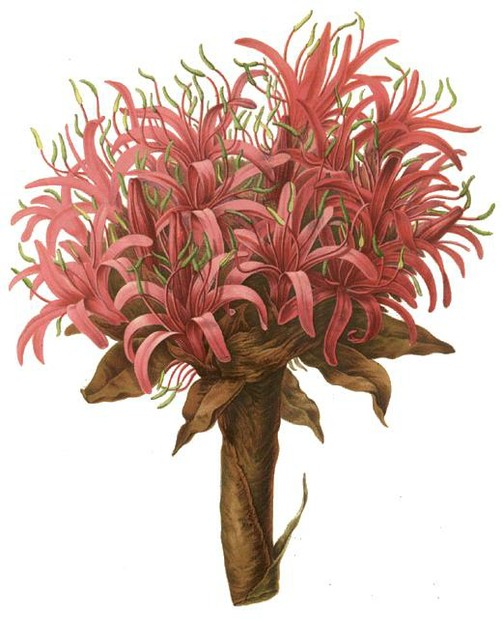 Charles Jacques Édouard Morren's La Belgique horticole, Vol 18 (1868), Plate 2, pages 16-17 |
Australian Legends by C.W. Peck ~ Available via Amazon
The premier collection of Aboriginal folklore and stories from Australia.
 |
| Australia-themed books |
You might also like
Dreamtime Perenties: Australia's Enormous Varanus Giganteus o...The largest lizard in its native Australia, perentie (Varanus giganteus) has ...
Ferdinand Bauer: "the Leonardo of natural history illustration"Ferdinand Bauer created exquisitely realistic paintings and sketches of the n...
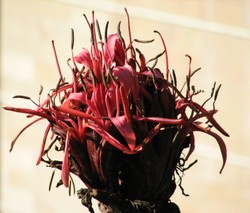

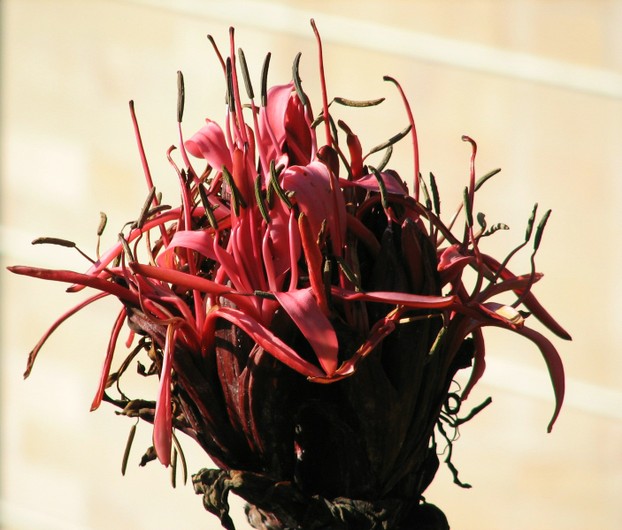
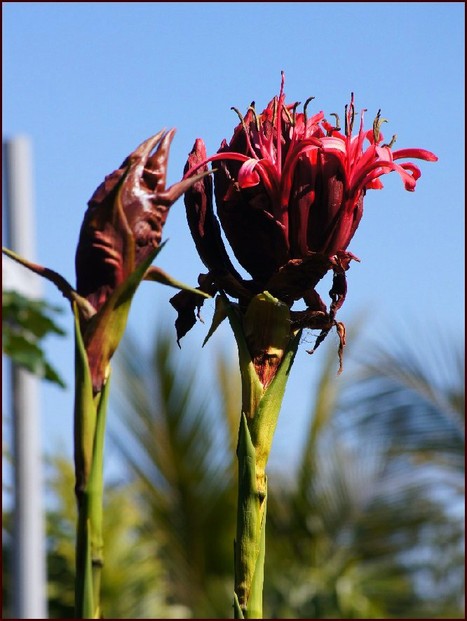
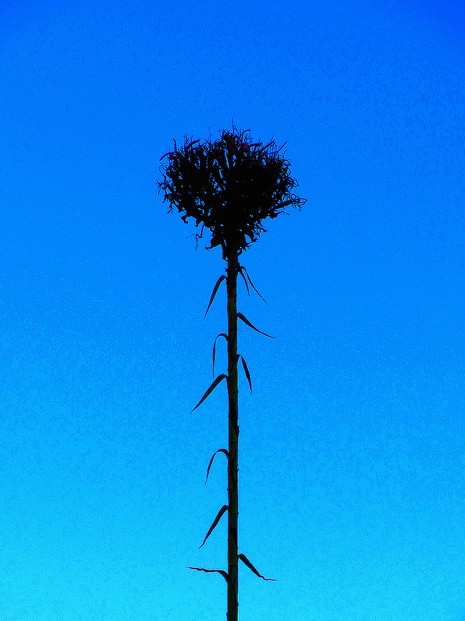
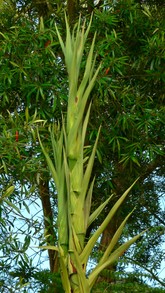
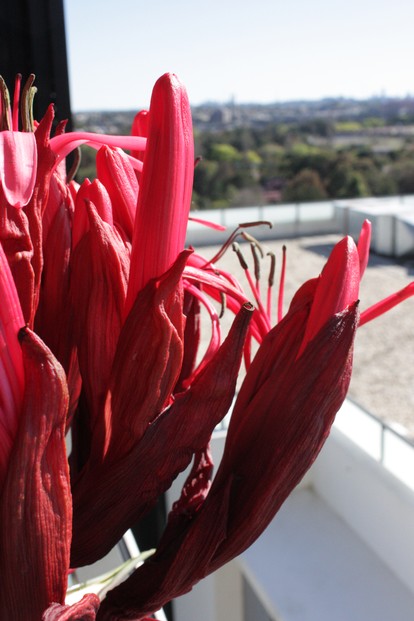
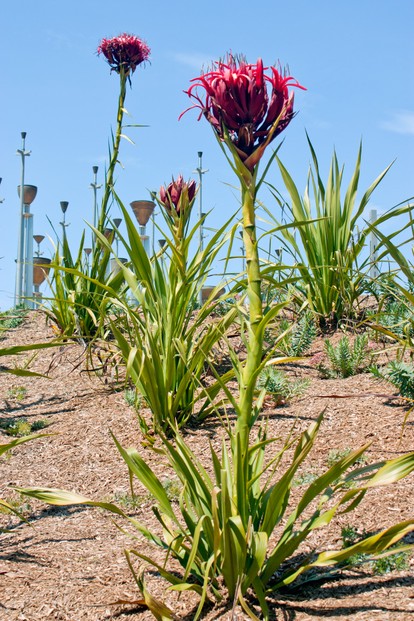
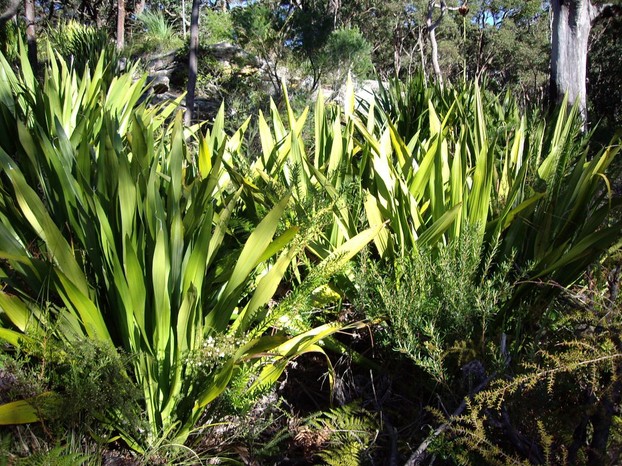
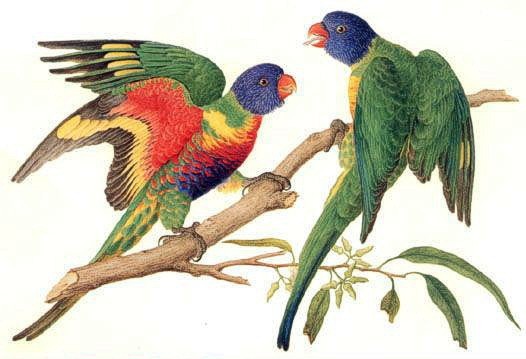
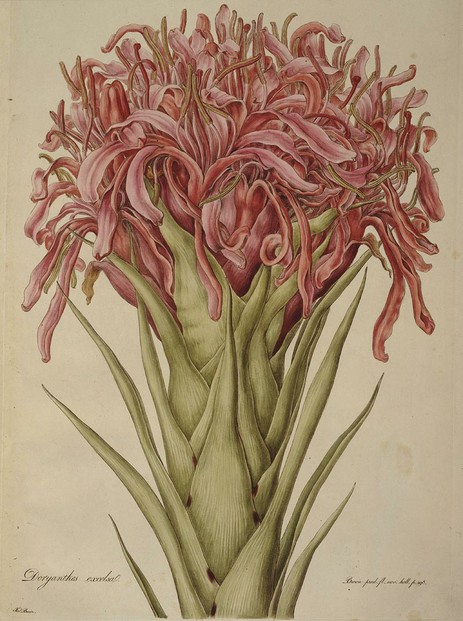
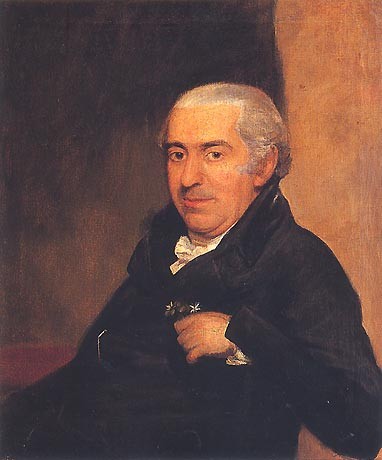
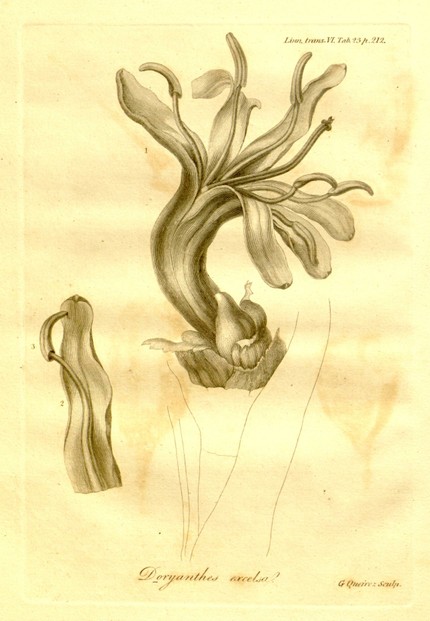


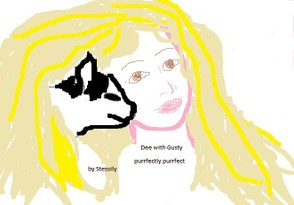

 Are Hawaiian Huakai Po Nightmarchers Avenging Halloween Thursday?on 10/02/2024
Are Hawaiian Huakai Po Nightmarchers Avenging Halloween Thursday?on 10/02/2024
 Mailing Addresses for 2023 Form 4868 Extending 1040 and 1040SR April 15, 2024, Due Dateon 04/15/2024
Mailing Addresses for 2023 Form 4868 Extending 1040 and 1040SR April 15, 2024, Due Dateon 04/15/2024
 Mailing Addresses for 2023 Forms 1040 and 1040SR Filed in 2024on 04/15/2024
Mailing Addresses for 2023 Forms 1040 and 1040SR Filed in 2024on 04/15/2024
 Mailing Addresses for 2022 Form 4868 Extending 1040 and 1040SR April 18, 2023, Due Dateon 04/13/2023
Mailing Addresses for 2022 Form 4868 Extending 1040 and 1040SR April 18, 2023, Due Dateon 04/13/2023

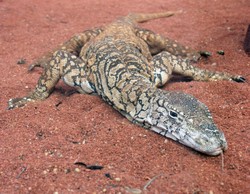
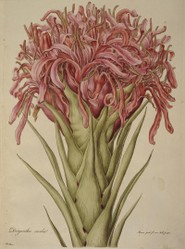
Comments
Mira, You're welcome!
Thank you!
Mira, The word gymea sounds like "guh-MEE-uh" when pronounced quickly and "geye-MEE-uh" when said slowly!
Mira, Australian plants are as fascinating as everyone and everything else Australian! Everything about gymea lily cries out for appreciation, conservation, and preservation. A lot in fact may be learned about eco-system tolerance by studying the diverse conditions and environments which sustain Australia's flaming lily.
P.S. How do you pronounce Gymea?
This is quite a beautiful flower, and its stem is beautiful too. I realize I know next-to-nothing about the Australian flora, so thanks for this!